
Over the past year, my children and I have spent almost every weekday morning reading together while drinking tea or eating tiny portions of our Easter candy for weeks on end. They are all preschoolers and toddlers—ages 5, 4, 2, and nine months—so you would think that I’d not be that interested in our reading material. I’ve enjoyed it, however, as much as they have.
We mostly read around the kitchen table or snuggled together on the couch, but we’ve also read on picnic blankets in the local county forest and lying about in the sunshine on our front porch. I’ve consciously cemented reading time into our family routine for three main reasons: because reading to children is the number-one thing you can do to develop their intellects; to give all members of our family common ideas and experiences that strengthen our minds and relationships; and because we all just plain enjoy it. The quickest way to get any of my children, except the baby, to do anything is to suggest book reading may occur afterwards.
Books Everyone Can Enjoy Together
Ideas about age segregation and “age appropriateness” have their place, but they can create artificial barriers to bonds between generations and even just slightly different age groups. A chief reason to not waste one’s time on a particular book is that it doesn’t appeal broadly outside of a narrow, throwaway market niche. If a book is only interesting to toddlers or middle schoolers because it reflects their immaturity and narrowness (looking at you, “Pinkalicious”) rather than transcends those defects, it’s probably not a very good book. In other words, if mom hates reading a certain book, there’s often a good reason.
Sometimes I will still read books like that, such as the alphabet picture book “Chicka Chicka Boom Boom,” because it has other useful qualities—in this case, helping little people recognize the letters of the alphabet while they giggle at the story. But, as a mother, I mostly get through these sorts of books because I have to, not because I want to. I am not interested in their contents, so I read such books as a service to the little ones who are. We go through it as few times as possible—which is usually many times, because they nag the heck out of me for their favorites—then I return it the library and try to never borrow it again.
The books we read during morning time, on the contrary, are enduring works that appeal to all ages. Yes, there really are books that both toddlers and grown-ups (and everyone in between) can enjoy with deep satisfaction. As your family lolls about during the summer sunshine, think of reading one or several such books together to enhance your own family culture. It offers something to do when the summer blues hit, provides endless material for dinner-table discussions, and knits your hearts and minds together.
Other Resources for Book Suggestions
These recommendations are just some places to start. You can find more fabulous book recommendations at Read Aloud Revival (an excellent resource for “building your family culture around books,” starting with easy, bite-size ideas anyone can pull off), E.D. Hirsch’s “Books to Build On” (available at just about every library), William Bennett’s “The Educated Child,” Charlotte Mason Bookfinder, and Ambleside Online (click through to the recommended books for each grade). You also can’t go wrong buying just about anything from Beautiful Feet Books, which has an especially good American history selections.
All of these will interest people from age 2 through 102, engage all readers and listeners in the riches of American and Western culture, and, as a bonus, have material that is equally of interest to boys as to girls. Their themes are robust and appealing to both sexes. (Treat the ladies to Jane Austen on their own time, in other words; you may get an unusual man or teen to enjoy her, but not usually until they are better readers.) To derive the most use and enjoyment from your summer book excursions, preface them with Mortimer Adler’s classic, “How To Read a Book.”
Tips On Making It Happen
Lastly, how to actually follow through on your noble intentions to spend time reading as a family. One of the simplest and most effective ways to build a habit is to “peg” it to another habit. Tie your reading time to something you already automatically do—like eating breakfast (you don’t have to rush off to school in the summer!) or cleaning up dinner dishes (someone can read while the others clean quietly). Since it is summer, perhaps you might for a special treat schedule a once-weekly family readaloud time while outside at a local park or nature preserve.
I have lots of tricks to keep the kids attentive. The first one is simply adjusting your expectations to their attention span. You do want to lengthen their attention span, because that’s good for them, but pushing them all too far will be counterproductive. Once they start to get so wiggly that you have to disrupt reading to calm things down, you’ve got about two minutes before you need to close shop. Try to end with good behavior, as animal trainers do. Some days we can only manage 15 minutes. Other days, we’ve made it almost an hour. That’s our max currently.
When we read a long time like that it is never just the same book, although that could work for older children. I rotate books, and book lengths, reading three to five pages in our chapter books and mixing those in with a few selections of children’s poetry and plenty of picture books.
I induce the two-year-old to sit for all this by offering him a tiny bowl of Cheerios, letting him sit on my lap (body contact is calming), reading outside so he can play while we read, and giving him a stack of Legos on his highchair tray. The bigger kids also appreciate Cheerios and snuggles. After Easter I let them whittle down their Easter baskets with two candies each day from the baskets, until it was all gone.
Food always brings people together. My children also love herbal tea, which is basically no-calorie and somehow very absorbing. Bigger kids might appreciate coffee time. Summer is a great time to start this practice because you can also make your own watered-down juice pops (Ikea sells cheap molds) and let the kids eat one every day on the back patio while you read. Or try a low-calorie, cheap snack like popcorn. Some families also let listeners do quiet handcrafts such as coloring, knitting, whittling, and so forth.
Now: The list! It’s in no particular order. I went for more classic books because they tend to have better language development, appeal to a broader range of ages, and offer you a premium chance to develop your all-important cultural literacy, which helps you participate in and pass on the treasures of our civilization.
1. Little House on the Prairie
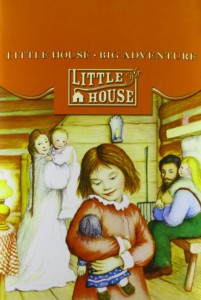
I read this series as a young girl and immediately headed outside with a trussed-up bonnet to pick long grass stems and pretend I was hauling in the wheat. Laura Ingalls Wilder pictorially presents an iconic period in American history, and she’s an excellent preface to reading authors such as Willa Cather, who develop similar themes in more adult terms.
While Wilder deliberately left out the worst parts of her childhood so as not to scare small children, such as the death of her younger brother and the day-by-day recounting of how sister Mary lost her eyesight, she still truthfully tells both about the hardships and joys of pioneer life. You will bite your nails hearing about pa’s fight against the grasshopper hordes, and feel his despair at losing his crops two years in a row after having mortgaged everything he owns. You will develop a greater appreciation for how comfortable modern life is and how we moderns squander its bounty with ingratitude. Wilder’s tales of the deep love among her family members, and their need for, trust in, and dependence upon each other will strengthen your appreciation for and devotion to your own family.
Your youngest family members, such as those aged two and three, will probably appreciate if you pick up some of the newer picture-book versions to read to them and whet their appetites (as well as provide a higher picture-to-words ratio). After that, my toddlers also ran to the couch to hear about “Laura and Mary.” They’ve also demanded that we visit Laura and Mary’s house during a summer road trip. You can start with any book in the Little House series; the eight originals may be enough themselves for years of family read-alouds!
2. American Tall Tales
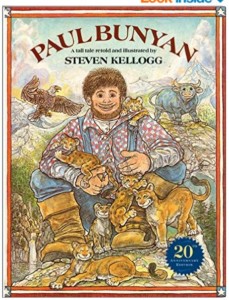
If you need to engage the masculine side of your family and you love America, you can’t go wrong by reading American tall tales. They’re fun for all ages—folks like whoppers just as much now as they did a century ago. Also, of course, they reveal the unique personality of America that so many people love (and hate). My children were especially impressed with the tale of Rip Van Winkle, and spent 20 minutes trying to re-enact and explain the story.
Every American needs to know about Johnny Appleseed, Paul Bunyan, and Davy Crockett. You can find eight American tall tales here in one collection; and my oldest son especially loves the retellings in the series illustrated by Steven Kellogg, who has done “Pecos Bill,” “Johnny Appleseed,” “Paul Bunyan,” “Mike Fink,” and “Sally Ann Thunder Ann Whirlwind Crockett.”
3. The Wind In The Willows
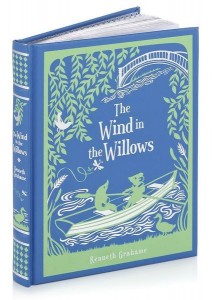
The language in this book is so exquisite it can hardly be read without moist eyes uplifted. This is a story about, among other things, friendship. Rat, Mole, and Badger love their friend Toad so much that they are willing to step in and take over when he loses his mind over a newfangled invention called the motorcar. He’s a menace to all he meets and wasting his family fortune buying cars just as furiously as he can wreck them.
So they perform some tough love on him by locking him up and managing the family estate until he snaps out of his madness. Catch anyone doing that nowadays—it wouldn’t be “nice” (although worse is Toad slowly starving himself and endangering others through his madness).
Many, many other things happen, too, but here’s just a few lines from the first page to whet your appetite: “Spring was moving in the air above and in the earth below and around him, penetrating even his dark and lowly little house with its spirit of divine discontent and longing. It was small wonder, then, that he suddenly flung his brush on the floor, said ‘Bother!’ and ‘O blow!’ and also ‘Hang spring-cleaning!’ and bolted out of the house without even waiting to put on his coat.”
4. The Hobbit
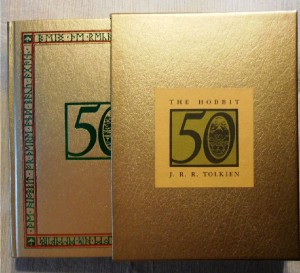
This classic adventure book is far more accessible to all ages and tastes than J. R. R. Tolkien’s perhaps better-known Lord of the Rings triology. The story is well-known enough to not need my summary here, but let me disclose something new I learned about the saga recently: It appears that Tolkien considered not Frodo and not Aragorn but the humble Sam as Lord of the Rings’ “chief hero.”
In a letter, Tolkien wrote: “I think the simple ‘rustic’ love of Sam and his Rosie (nowhere elaborated) is absolutely essential to the study of his (the chief hero’s) character, and to the theme of the relation of ordinary life (breathing, eating, working, begetting) and quests, sacrifice, causes, and the ‘longing for Elves’, and sheer beauty.”
What has this to do with “The Hobbit”? It is this book that most fully displays the hobbits’ “simple ‘rustic’” loves. LOTR itself is more of a war story. That’s always been my impression, anyway. You LOTR fiends can battle it out in the comments if you feel inclined, while the rest of us read “The Hobbit” with our families!
5. D’Aulaire History Books
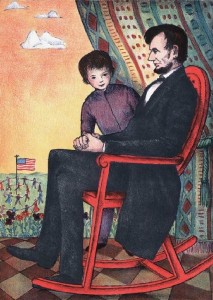
Cosmopolitan Europeans Ingri and Edgar D’Aulaire met at art school in Munich in 1921 and eventually immigrated to the United States. In 1931, they published their first children’s book at the suggestion of a New York librarian, subsequently going on to write and illustrate a series of children’s books about American heroes as well as other literary constellations such as ancient Norse and Greek myths.
Ingri and Edgar wrote and etched stone lithographs, co-producing illustrations with a distinct look. Their book on Abraham Lincoln was my children’s introduction to that president; it won the Caldecott Medal in 1940. While the books had for a long time gone out of print, they are still available in some instances on Amazon and almost every decent library has some. Recently, Beautiful Feet Books has reprinted “Columbus,” “Pocahontas,” “Benjamin Franklin,” “Buffalo Bill,” “George Washington,” “Leif the Lucky,” and, of course, “Abraham Lincoln.”
These are not mere picture books. They have serious substance inside, enough to interest people of all ages, all the way up to adult; yet the illustrations and vocabulary also draw in and make sense to younger children. You could read these repeatedly and, unlike “Chicka Chicka Boom Boom,” enjoy it each time.
6. Adventures of Tom Sawyer
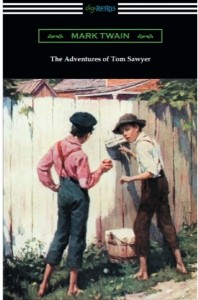
I recently re-read this book last summer as a perfect accompaniment to that season. It is full of all the boisterous energy of youth, both American and human, and the humor speaks to people at all levels. Alongside the humor, Mark Twain deals with serious issues such as coming of age, deception, racism and slavery, relations between the sexes, and developing character in unlikely circumstances.
Twain became bitter in his old age, but when he wrote “The Adventures of Tom Sawyer” his bitterness was not yet overwhelmingly acid. In fact, in some places here he’s downright tender. If you haven’t read this book yet, or it’s been a long time since you have, get a move-on.
7. Chronicles of Narnia
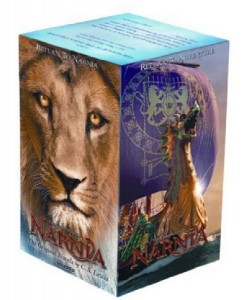
Throughout the years since childhood I have several times re-read C.S. Lewis’s Chronicles of Narnia (and his Space Trilogy) and each time I’ve discovered something new and exciting. Lewis was a famous classicist, so he layered his stories with multiple meanings just like the primordial myths he knew all the way into his bones. It’s like the literary version of an Easter egg hunt. Especially if you have seen the good and recently updated Walden Media movies, you really should read the books.
8. Hans Christian Anderson’s Fairy Tales
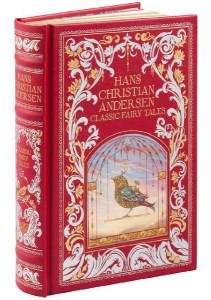
These are fairy tales as they were meant to be told, not reworked to deform children’s moral imaginations by removing the penalties for horrible behavior (looking at you, Disney’s version of “The Little Mermaid”). Adults may be squeamish about letting little children hear about naughty little girls who beg to have their feet chopped off because they won’t stop dancing as a curse for being too vain, but children don’t seem to be harmed by this kind of PG-13 fare (as opposed to senseless, gratuitous nudity and crudity).
Fairy tales form a child’s moral imagination—they teach him to love what is good and hate what is evil. They can do the same for adults. Besides that, classic fairy tales such as Anderson’s or Andrew Lang’s have rich themes and literary qualities that afford adults many opportunities for enjoyable conversation (ask me how I know!).
Barnes and Noble has done an excellent job overall with its leather-bound classics collection. They have a collection of Hans Christian Anderson, as well as many other reasonably priced and beautifully arranged titles well worth your time. We often give them as gifts. Once they’ve been out for a year or something they go on sale, and then you really should not fail to snap them up. We also love to give Scott Gustafson picture books as children’s gifts. See, now you’ve gotten me on books and I can hardly stop.









